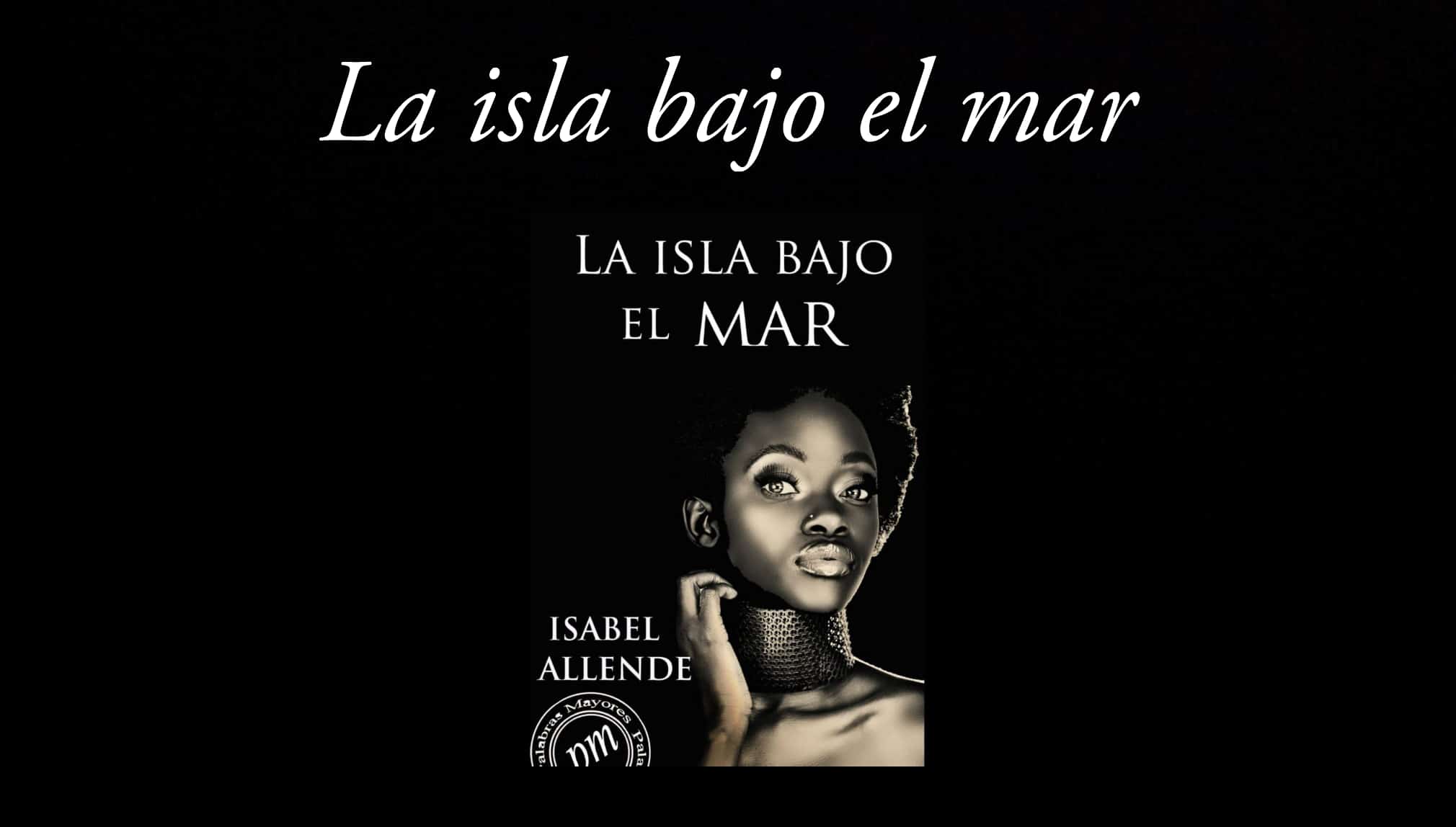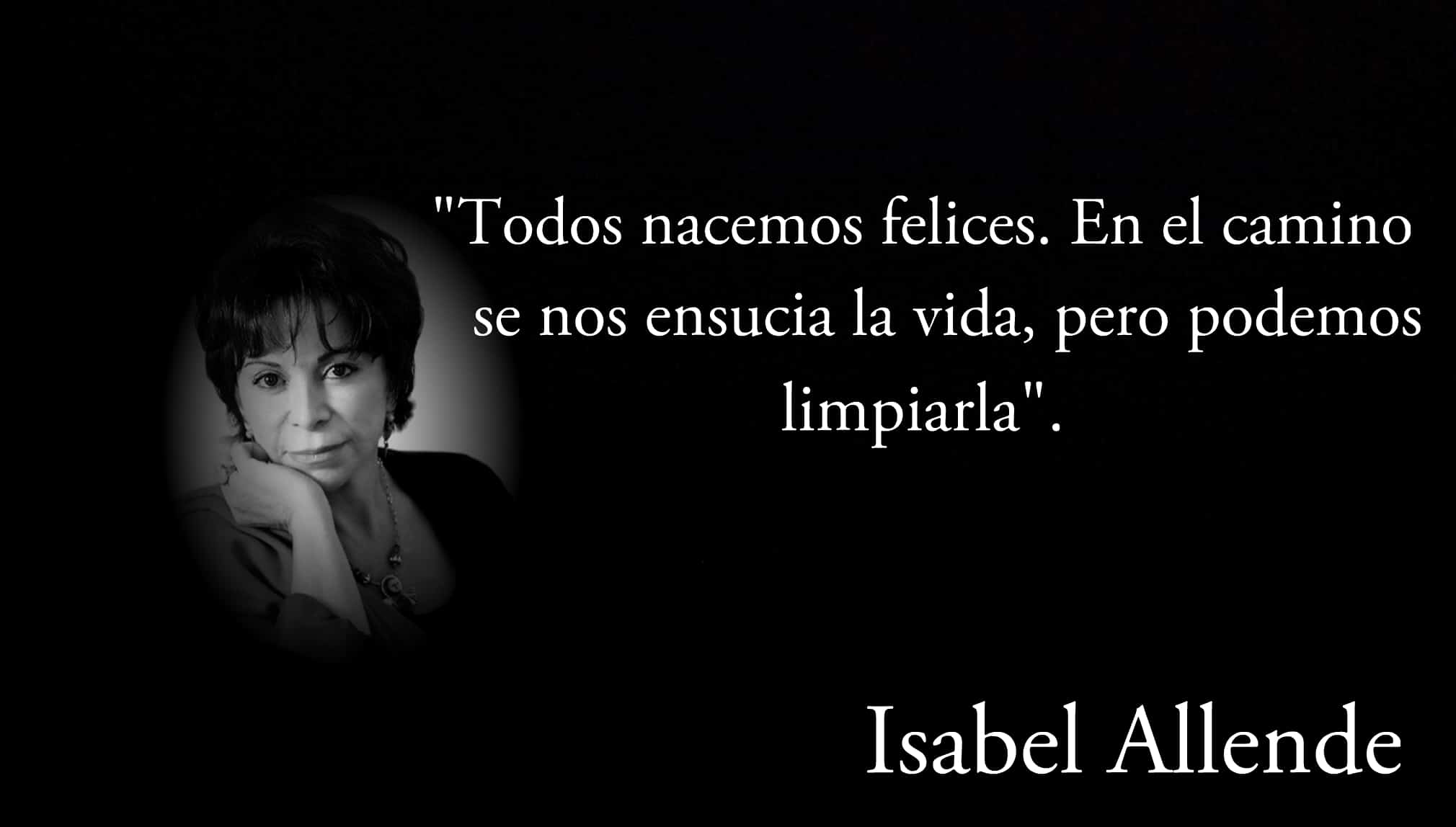
The island under the sea.
Published in 2009, The island under the sea is a novel by Chilean-American writer Isabel Allende. It recounts the fight for the freedom of the slave Zarité - known as Teté - in the Haiti of the eighteenth century. The book spans forty years from his brutality and fear-filled childhood to 1810, the time of final redress in New Orleans.
An iron will is forged with the support of other slaves to the rhythm of African drums and voodoo. Thus arises a woman determined to let go of the burdens of the past and find love despite suffering. According to K. Samaikya (2015) from Acharya Nagarjuna University (India), “The island under the sea it is one of the most dramatic stories of the seventeenth century. And it is the narrative about the only successful slave rebellion in the whole world ”.
About Isabel Allende
Birth and family
Isabel Allende Llona was born in Lima, Peru, on August 2, 1942. She is the eldest of three siblings. of the marriage between Tomás Allende (first cousin of Salvador Allende, Chilean president from 1970 to 1973) and Francisca Llona. His father was working as secretary of the Chilean embassy in Lima at the time of his birth. After the couple's divorce in 1945, Llona returned to Chile with her three children.
Studies
His mother would remarry Ramón Huidobro Rodríguez in 1953, a diplomat assigned since that year to Bolivia. There, the young Isabel studied in an American school in La Paz. Later, he completed his studies at a private British institute in Lebanon. Upon her return to Chile in 1959 she married Miguel Frías, with whom she had two children during their 25 years of union, Paula (1963-1992) and Nicolás (1967).
First publications
Between 1959-1965, Isabel Allende was part of the Food and Agriculture Organization of the United Nations (FAO). From 1967 he wrote articles for the magazine Paula. Andn 1974 he made his first publication in the children's magazine mampato, Grandma Panchita. That same year he also launched Lauchas and lauchones, rats and mice (Kid stories).
Exile in Venezuela
In 1975, Isabel Allende was forced into exile with her family in Venezuela due to the hardening of the Pinochet dictatorship. In Caracas he worked for the newspaper The National and in a high school, until the publication of his first novel The House of the Spirits (1982). It was the starting point of an editorial legend that catapulted her as the most widely read living author among Spanish-speakers to date.
A bestselling writer not without unfavorable criticism
To date, Isabel Allende has sold more than 71 million books, being translated into 42 languages. Despite its abundant commercial successes - especially in the United States -, There have been many detractors of his literary style. The island under the sea has not been the exception. About, Publishers Weekly (2009) criticizes the novel, because “… it reveals an author who studied a voluminous pile of facts without learning a single truth”.
Likewise, Janis Elizabeth (Book Holder, 2020) dismisses as "undercooked" and "overwritten" the numerous sexual scenes of The island under the sea. It also alleges that Allende "renounces the moderation and empathy essential to such an issue" (slavery). Nevertheless, booklist predicted at its launch: "The demand for this wonderful and immersive novel about the courage of men and women who risk everything for freedom will be high."
Summary of The island under the sea
The beginning of the story is located on Saint - Domingue Island (Hispaniola) in the 1770s. There, a small and very skinny Zarite (known as Tete) is shown. She is the daughter of an African slave she never met and one of the white sailors who brought her mother to the new world. Through a harsh childhood filled with fears, he finds relief amidst the sounds of drums and voodoo loa practiced by other slaves.
Tete is bought by Violette - an ambitious mulatto courtesan - on behalf of Toulouse Valmorain, a twenty-year-old French heir to a sugar plantation. The landowner becomes dependent on the slave, although his original purpose was to buy her for his girlfriend, Eugenia García del Solar. After the marriage, Eugenia's health begins to deteriorate and she suffers several successive miscarriages that take her to the brink of insanity.
Cruelty and hope
A few years before dying, Eugenia manages to give birth to a living child, Maurice, entrusted to Zarite for his upbringing. At this point, the once rickety Tete has transformed into a voluptuous teenager, lustfully desired by Valmorain. The abusive master ends up raping his slave regardless of the affectionate mother-son relationship developed with her firstborn. Tete becomes pregnant with a child who will be taken from her at birth.

Isabel Allende.
Valmorain hands the baby over to Violette, married at this point to Captain Étienne Relais. Tete finds comfort and love in a slave who has just arrived at the plantation, Gambo. But the rapes of Toulouse continue, so when Gambo escapes to join the rebellious slaves, she cannot follow him because she is pregnant again. Although, this time they let him stay with the girl, called Rosette.
The slave revolution and the civil war
Rosette receives a maid's education and becomes inseparable from Maurice, even when Valmorain does not approve. After the slave rebellion led by Toussaint Louverture breaks out, Gambo warns his beloved Zarite that the Valmorain plantation is going to be burned. But she refuses to abandon Maurice, rather warns the French landowner in exchange for her freedom and that of her daughter.
The Valmorain family moves entirely to Le Cap, including Zarite and Rosette. Once installed, Tete begins to receive formal instruction from Zacharie, the butler of the seat of government. Later, the Valmorains are forced into exile again after the outbreak of war which will end with the formation of the Black Republic of Haiti.
New Orleans
In Louisiana, Valmorain establishes a new plantation and marries Hortense Guizot, a despotic and greedy woman. The new employer does not take long to come into conflict with Maurice, Zarite and Rosette, therefore, she does not hesitate to mistreat her black servants. The biggest problem is that Tete and her daughter are still considered slaves.
Valmorain still does not keep his word despite having signed the freedom of his black servants. Maurice opposes the degrading situation and is sent to study at a boarding school in Boston, where he joins the abolitionist cause. After a few years, Zarite manages to make the long-awaited freedom of her and her daughter effective with the help of a priest.
Zarite's happy reunions
Tete is reunited in New Orleans with Violette and Jean Relais, the latter is actually her first son who was estranged by Valmorain. Likewise, she begins to work as a free woman in Violette's store (married at that time to Sancho García del Solar). Zarite's happiness increases even more when it is achieved with Zacharie. They both fall in love and as a result of that passion they engender a girl.
Maurice's return
As soon as Maurice returns to New Orleans, he communicates to his father (ill) his intention to marry Rosette. Valmorain is enraged and in vain opposes the marriage between the half-siblings, as Zarite and Zacharie conspire to make the wedding possible. Rosette soon became pregnant, however, she was imprisoned "for slapping a white woman" (Hortense Guizot) in public.
Rosette's health is rapidly deteriorating in prison. She is ultimately released thanks to the mediation of a Valmorain dying and eager to reconcile with his son. Finally, Rosette dies giving birth to a baby named Justin. Maurice, heartbroken, decides to go around the world. Before leaving, he entrusts the raising of his son to Zarite and Zacharie, who look to the future with hope and a new family.
The island under the sea
The review of New York Times Book Review punctuates a very entertaining novel, "Placed within the framework of the genesis of the world's first black republic." These reviews also speak of a "refined magical realism", detailed to the extreme, addictive to the reader. For this purpose, Isabel Allende used an omniscient narrator almost always in the third person, with some first-person segments of the main character.
Consequently, the unceremonious descriptions of the inhuman bestiality of slavery delivered by the protagonist herself can be disturbing to susceptible readers. However, some passages lengthen innecessarily the text because they do not transcend the outcome of the plot nor do they contribute to the depth of the characters.

Is The island under the sea a historical novel?
The answer to this question finds positive sentences and detractors in similar proportions, a typical situation of most of Isabel Allende's works. The review of LibraryJournal (2009) speaks of “… a story full of adventures, vivid characters and very rich and detailed descriptions of life in the Caribbean at that time”. On the other hand, the portal Summing it up (2020) explains:
“If Allende's real story is incomplete and clumsy, his fictional story is loaded not only with excessive period detail, but also with didactic and anachronistic political correctness, breaking the cardinal rule of the novelist that one should show rather than tell ”. In any case, the same medium concludes: "The island under the sea it is elegant, moving and permeated with a true sense of loss ”.
… 'What is the sea of isabel allende? slds.
why is it called the island under the sea?